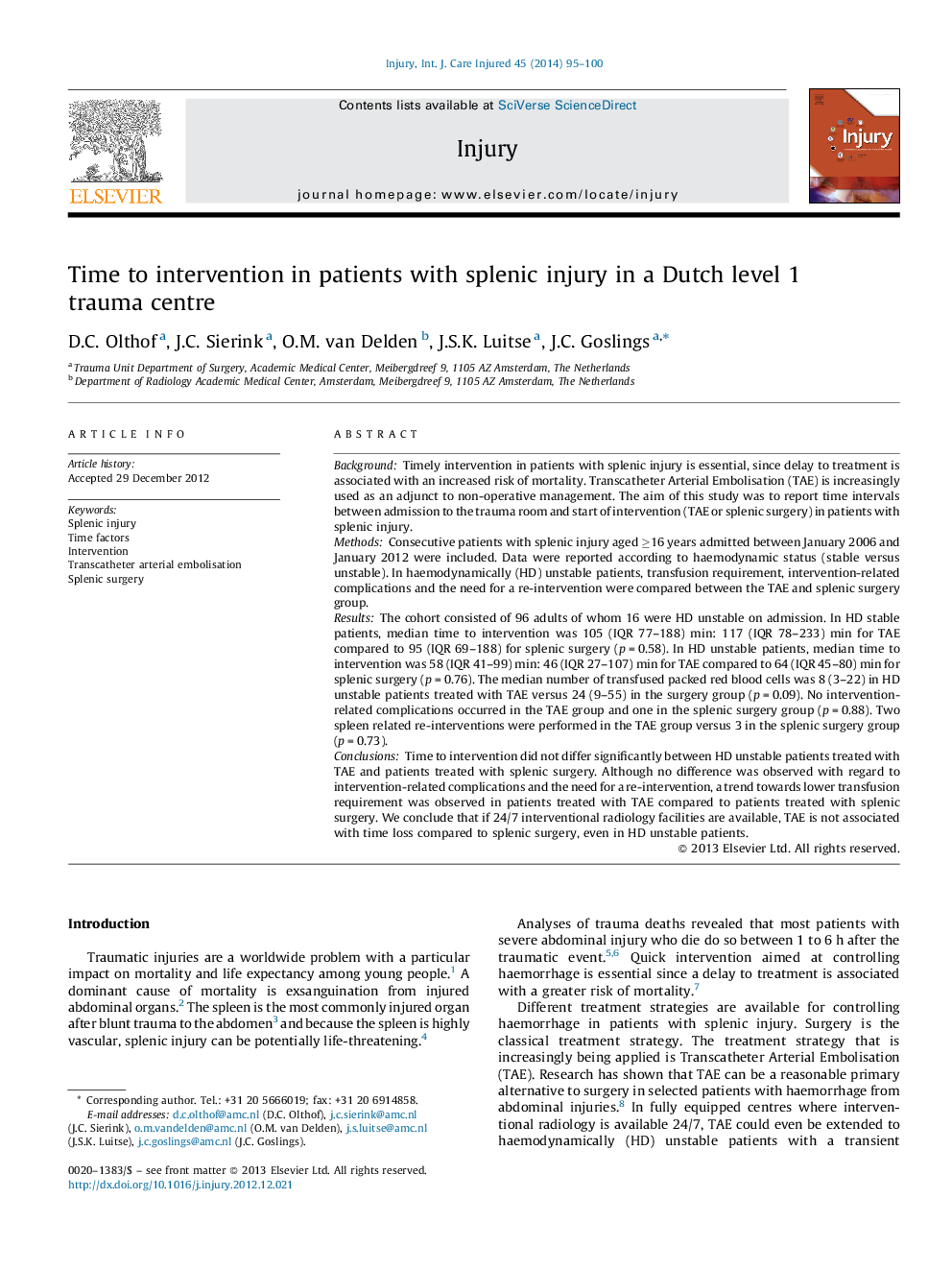| کد مقاله | کد نشریه | سال انتشار | مقاله انگلیسی | نسخه تمام متن |
|---|---|---|---|---|
| 3239803 | 1206020 | 2014 | 6 صفحه PDF | دانلود رایگان |
BackgroundTimely intervention in patients with splenic injury is essential, since delay to treatment is associated with an increased risk of mortality. Transcatheter Arterial Embolisation (TAE) is increasingly used as an adjunct to non-operative management. The aim of this study was to report time intervals between admission to the trauma room and start of intervention (TAE or splenic surgery) in patients with splenic injury.MethodsConsecutive patients with splenic injury aged ≥16 years admitted between January 2006 and January 2012 were included. Data were reported according to haemodynamic status (stable versus unstable). In haemodynamically (HD) unstable patients, transfusion requirement, intervention-related complications and the need for a re-intervention were compared between the TAE and splenic surgery group.ResultsThe cohort consisted of 96 adults of whom 16 were HD unstable on admission. In HD stable patients, median time to intervention was 105 (IQR 77–188) min: 117 (IQR 78–233) min for TAE compared to 95 (IQR 69–188) for splenic surgery (p = 0.58). In HD unstable patients, median time to intervention was 58 (IQR 41–99) min: 46 (IQR 27–107) min for TAE compared to 64 (IQR 45–80) min for splenic surgery (p = 0.76). The median number of transfused packed red blood cells was 8 (3–22) in HD unstable patients treated with TAE versus 24 (9–55) in the surgery group (p = 0.09). No intervention-related complications occurred in the TAE group and one in the splenic surgery group (p = 0.88). Two spleen related re-interventions were performed in the TAE group versus 3 in the splenic surgery group (p = 0.73).ConclusionsTime to intervention did not differ significantly between HD unstable patients treated with TAE and patients treated with splenic surgery. Although no difference was observed with regard to intervention-related complications and the need for a re-intervention, a trend towards lower transfusion requirement was observed in patients treated with TAE compared to patients treated with splenic surgery. We conclude that if 24/7 interventional radiology facilities are available, TAE is not associated with time loss compared to splenic surgery, even in HD unstable patients.
Journal: Injury - Volume 45, Issue 1, January 2014, Pages 95–100
